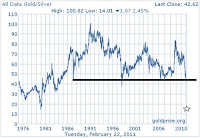Here is a rare article from the Gold Tribe Newsletter - There is no direct link as this is a private newsletter). This is a wonderful essay that exemplifies the notion that even if you do NOT live in the USA, you really SHOULD worry about what is happening with the US Dollar today and look where it is going.
As we know all too well, the world's fiat currencies are backed with nothing but faith - and as soon as that confidence begins to wane, this whole thing will begin to unravel quickly. In times like this, people historically run to something more stable and of a store of value. I continue to encourage people to continue to buy gold and silver. Here is the article written by Simon Heapes:
My Country Does Not Use the US Dollar, So Why Should I Care? By Simon Heapes
I will attempt to explain here why you should care. Let’s begin by looking at one of the symptoms of inflation known commonly as “debt‟ in simple terms.
The reserve currency of the world is the US Dollar. As I have stated be-fore, money creation of the US$ has doubled in recent times compared to the last 50 years of the US Dollar’s inflated rates. The reserve banks for every country in the world hold the vast majority of their reserves in the form of US$ Treasury Bills, bonds and notes. These are financial IOU instruments similar to certificates of an underlying asset. This came into effect in the early 1980s when all western nations floated their respective currencies against the US Dollar. It’s interesting to note how politicians and media put a spin on words calling what was effectively backing all nations’ currencies with US Dollars as "floating" them!
The US Treasury creates this money simply by asking Congress to increase the debt ceiling whenever the debt it has already issued reaches that ceiling. It is currently raised to above $14.5 Trillion. That can take varying amounts of time depending on how much inflating the Treasury is doing at the time. For example, the debt ceiling has been lifted year in and year out now for the last three years and will probably be raised again and again.
So what happens with foreign central banks? A nation's exporters receive US Dollars in return for their exports to the US as well as others nations. (Nations are currently forced to use US Dollars, because it is the world’s reserve currency in exchange for goods and services between them.) Then the exporters go to their own bank and exchange the Dollars for the local currency. Their bank does the same thing by going to the central bank of its own nation. The central bank then takes the Dollars and uses them to buy Treasury paper. Thus, the Dollars the US spends on imports are recycled back to the USA.
In essence, the asset backing for the world’s economic system is nothing more than a borrowing operation from the US to foreign nations’ reserve bank treasuries.
It is US Dollars in foreign nations‟ reserves which back their own Reserve Banks thereby underpinning all nations‟ currencies around the world with a few exceptions. The central banks of these foreign nations then use these reserves as a base upon which they inflate their own currencies.
There are two limits to the amount of money avail-able to be borrowed:
1) One is the 'debt ceiling' that must be ap-proved by Congress determining the over-all limits.
2) The second is the amount of money that a Treasury is prepared to spend its own currency on to top up the borrowing.
At this stage there doesn't seem to be a political limit to raising the debt ceiling if the last few years are any example of it abating. Inflation was and is inevitable.
The amount of Treasury Bills purchased is used as a device to manage the value of foreign nations‟ own currencies against the US$ thereby being able to inflate their currencies as a due process.
Something to think on:
1) As of 2005, Gold measured in all currencies was steadily increasing.
2) You cannot study the subject of Gold and Silver without studying its counterfeit, that being the world’s paper currencies.
Until next time, Simon HeapesTreasury Secretary of YOUnique
END
Best to you,
Kirsty Hogg
Goldvestments Copyright © 2011

